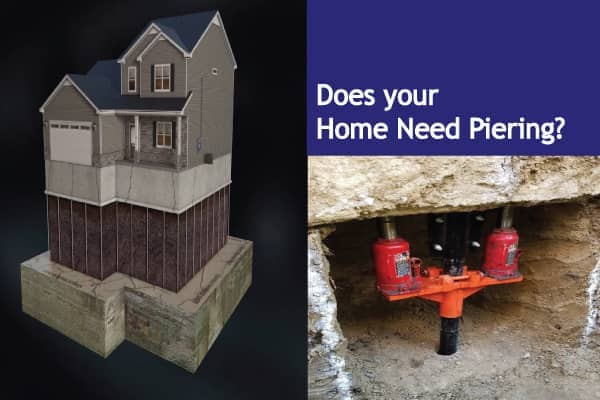The Greatest Guide To Best Basement Waterproofing
The Greatest Guide To Best Basement Waterproofing
Blog Article
Excitement About Best Basement Waterproofing
Table of ContentsBest Basement Waterproofing Fundamentals ExplainedExcitement About Best Basement WaterproofingThe Facts About Best Basement Waterproofing UncoveredThe Definitive Guide to Best Basement WaterproofingThe Only Guide to Best Basement Waterproofing
What triggers water damages problems in your basement? Pipelines that line the inside of your wall surfaces are simply one example of where water damages can occur.The dirt and ground of your home is extremely essential. If there is way too much water bordering your home, nevertheless, it can press the dirt right into your home and trigger the seals of your basement to end up being endangered. Best Basement Waterproofing. when you see excess water in locations where it should not be, that is an excellent indication that you have an issue
Concrete waterproofing layers are cement-like; when completely dry, they adhere completely to concrete and masonry wall surfaces. You apply the coating with a hefty brush made with bristles swirled throughout application for an appealing, finished appearance. However, concrete water resistant coverings can not be applied to previously repainted surfaces Silicate-based concrete sealers, additionally called densifiers, are additionally suitable just for wall surfaces that haven't been painted or secured.
Since these are penetrating sealers, they can't flake off or peel off, and you can have paint applied over them. The American Eagle group might discover more challenging reasons for your dampness concerns; there are added remedies readily available. Plastic sheets and panels may be combined with interior cellar water drainage systems. They do not quit water from making it through the wall surface, yet they do quit it from messing up points in the basement.
How Best Basement Waterproofing can Save You Time, Stress, and Money.
A sump pump is required to move water out of your cellar. Here are a couple of points the experts can mount to aid the waterproofing procedure: this is developed for the wall surfaces of your basement.
It additionally helps avoid the development of mold and mildew or mildew, which can be a quite huge wellness hazard. Basement waterproofing is a wonderful way to be successful of possible water damages that may come your way. Do not be reluctant to call neighborhood specialists, like those at American Eagle with any waterproofing questions you may have relating to what cellar waterproofing resembles and more.
The Ultimate Guide To Best Basement Waterproofing
When it pertains to securing your home, one of the most vital actions you can take is cellar waterproofing. A dry cellar not just makes sure a risk-free and healthy setting for you and your household, however it also aids to avoid expensive water damage and mold growth. In this article, we will review the relevance of basement waterproofing, the benefits it gives, and exactly how you can tackle safeguarding your room.
By investing in cellar waterproofing currently, you can assist to guarantee that your home keeps its value and attractiveness with time. One more advantage of basement waterproofing is that visit the site it can aid to reduce your energy expenses. A wet basement can add to higher degrees of humidity in your house, which can make your a/c system job more challenging to maintain a comfortable temperature level.
When it involves cellar waterproofing, there are a number of methods that can Home Page be made use of to keep water out of your area. These include interior sealers, exterior waterproofing membranes, and water drainage systems. The very best technique for your basement will rely on factors such as the degree of water breach, the condition of your structure, and your spending plan.
Finally, cellar waterproofing is a vital action in safeguarding your home from water damages, mold and mildew growth, and other concerns. By spending in basement waterproofing, you can make sure that your room remains dry, risk-free, and healthy and balanced for you and your family members. Not just does basement waterproofing provide peace of mind and security for your home, yet it can also enhance its worth and conserve you cash on power prices in the future.
The 45-Second Trick For Best Basement Waterproofing
Interior sealants are a sort of cellar waterproofing method that includes using a sealer to the within of the basement walls and floors. Water can leak right into a cellar through cracks, spaces, or permeable concrete, specifically in locations where there is high groundwater or poor drain. This can my latest blog post cause water damages and mildew growth, along with damages to the structure and architectural integrity of the building.
The sealant creates a barrier that avoids water from leaking with the concrete. This technique is only efficient for minor water damage and does not deal with the underlying causes of the moisture. The main source of the need for exterior cellar waterproofing is water seepage from the exterior of the structure wall surfaces.
It is an efficient option for protecting against water damages and maintaining the architectural honesty of the building. Nonetheless, it can be pricey and turbulent to mount, as it requires excavation around the foundation and might entail landscaping and other repair work once the waterproofing is total. Nonetheless, this technique is the most dependable and long-lasting remedy for protecting against water infiltration in the basement.
Best Basement Waterproofing Fundamentals Explained

Report this page